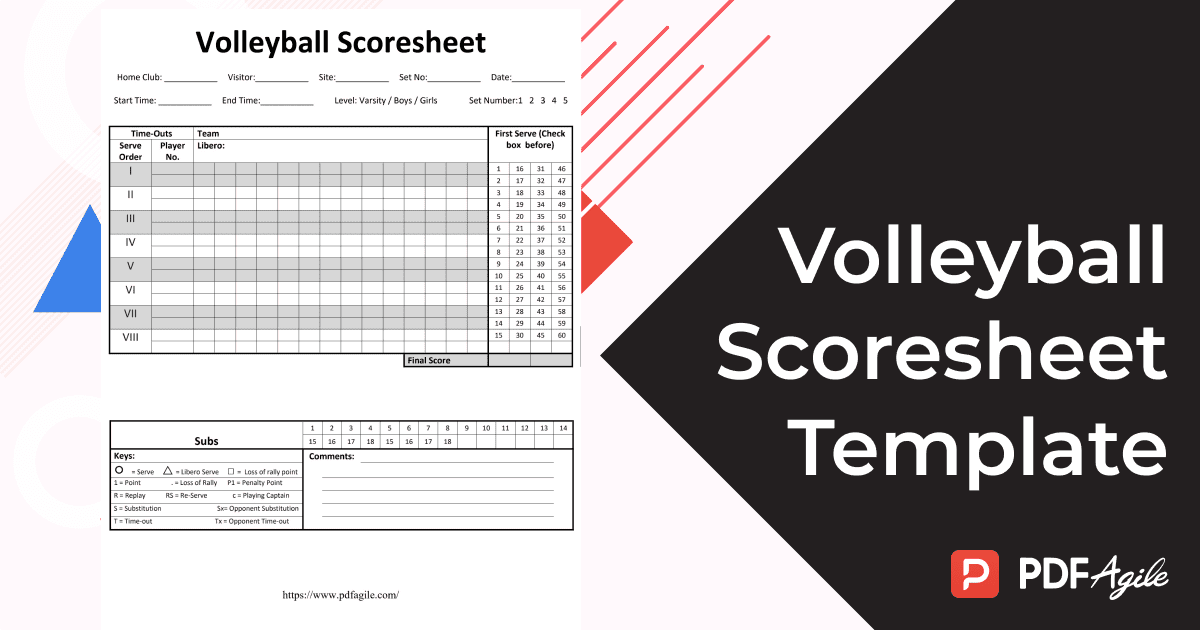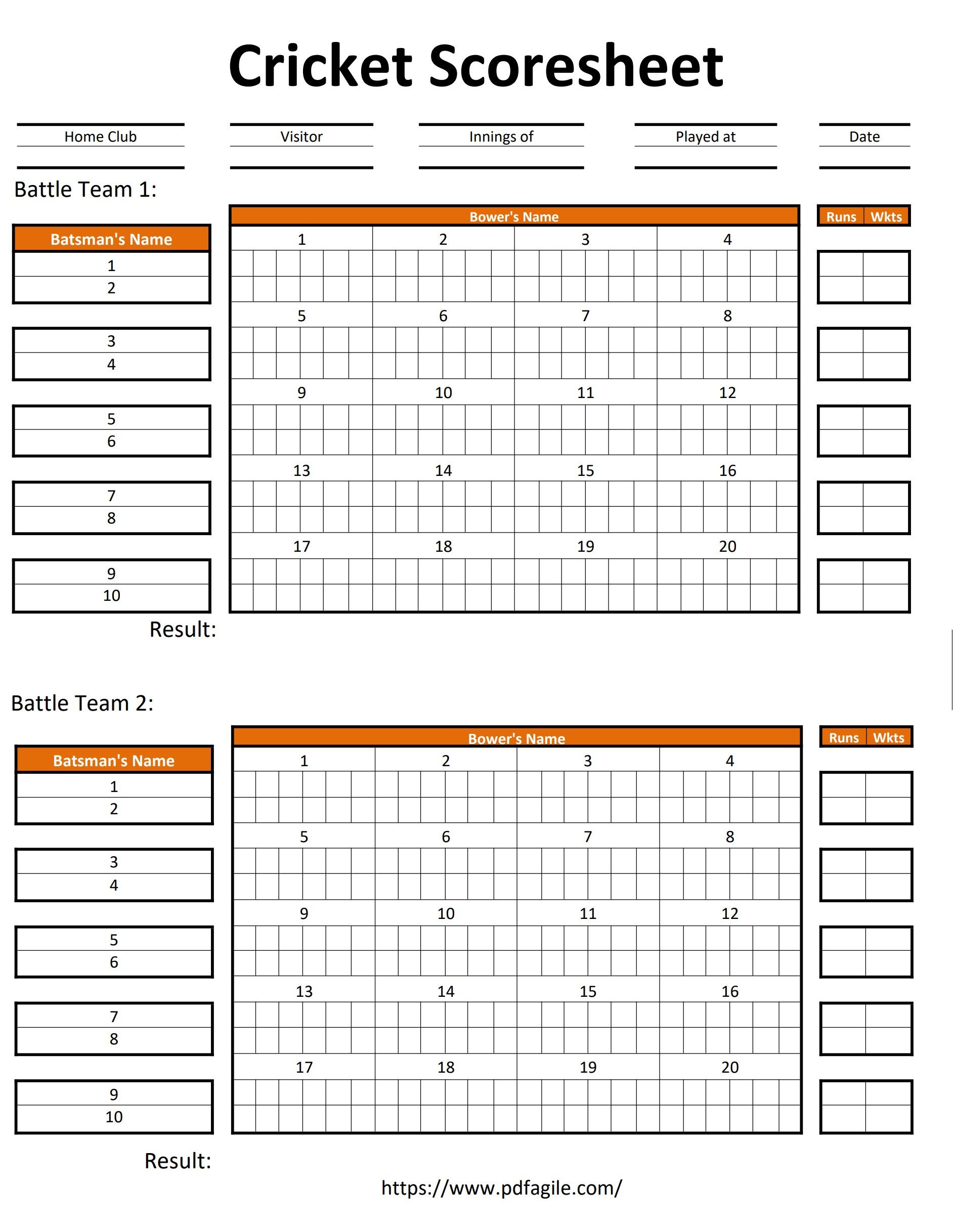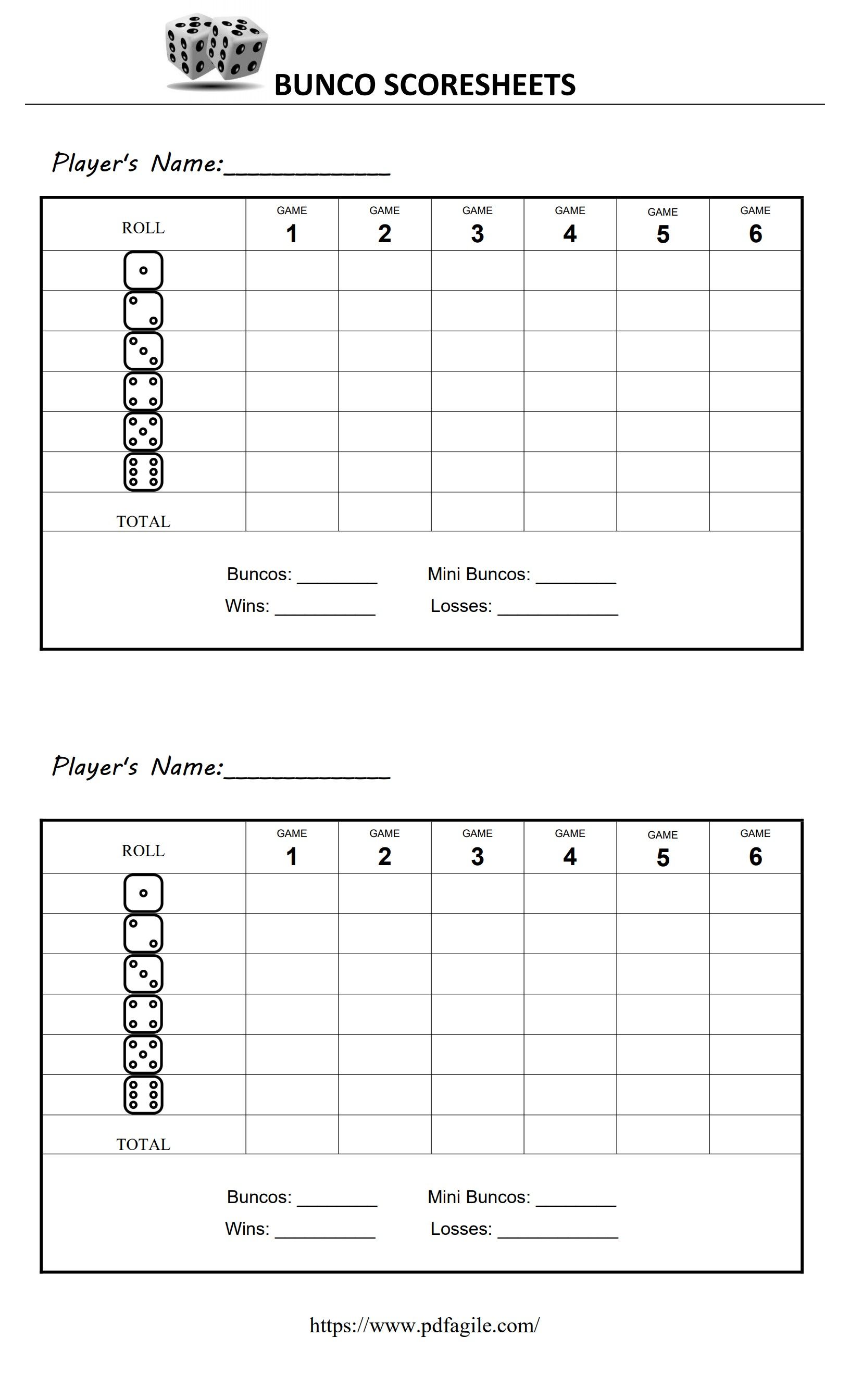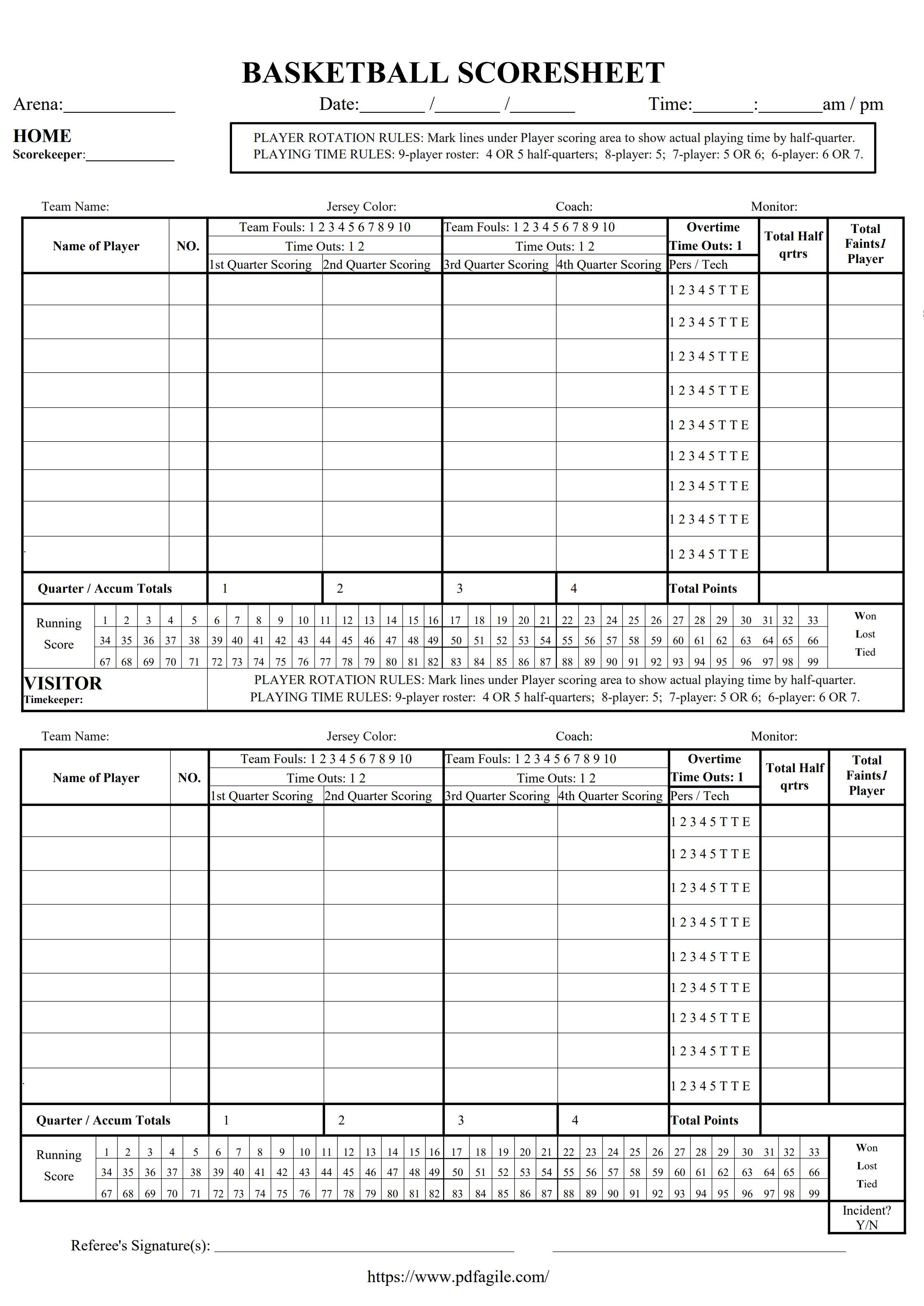The thunderous spike, the heart-stopping dig, the electric energy of a close rally - volleyball is a sport that thrives on momentum and precision. But amidst the thrilling back-and-forth, a crucial element ensures the game runs smoothly and keeps track of the action: the volleyball scoresheet.
This unassuming sheet of paper is more than just a tally of points. It's the official record keeper, the silent observer that chronicles the game's twists and turns. Whether you're a seasoned player, a dedicated coach, or a captivated spectator, understanding the scoresheet unlocks a deeper appreciation for the strategic brilliance and athletic prowess displayed on the court.
This guide will equip you with the knowledge to navigate the volleyball scoresheet with ease. From understanding its basic layout to utilizing it effectively during a game, you'll be well on your way to becoming a scorekeeping champion and elevating your enjoyment of this dynamic sport.
What is a Volleyball Scoresheet?
In the fast-paced world of volleyball, rallies can erupt in a blink of an eye. Keeping track of every point, serve change, and player rotation can feel like juggling aces! This is where the volleyball scoresheet steps in, acting as the game's vital stats sheet.
Think of it as a dedicated record keeper, meticulously tracking the following:
- Points Scored: The scoresheet ensures clear and accurate recording of points scored by each team throughout each set.
- Serving Order: It keeps track of which team is serving at any given moment, crucial for maintaining the flow of the game.
- Player Rotations: The scoresheet (sometimes with an optional dedicated section) helps visualize the complex sequence of player substitutions as teams rotate positions on the court.
- Individual Player Statistics: For more advanced scorekeeping, some sheets offer sections to track individual player statistics like spikes (powerful attacks), digs (defensive saves), and aces (serves that result in the other team not being able to return the ball).
Benefits of Using a Volleyball Scoresheet
A volleyball scoresheet isn't just a piece of paper with numbers – it's a powerful tool that enhances the entire volleyball experience. Here's how:
- Elevates the Viewing Experience: Forget confusion and missed details! A well-maintained scoresheet allows spectators to follow the game's progress more closely. They can track the point history of each set, understand serving order changes, and even appreciate individual player contributions through recorded statistics (digs, aces, etc.). This fosters a deeper engagement with the game's flow and strategy.
- Provides a Reliable Record: Memories may fade, but a scoresheet offers a permanent record of the game. Coaches can use it for post-game analysis, identifying strengths and weaknesses for future improvement. Players can track their individual performance and set goals for future matches. Statisticians can use the data to analyze team trends and identify standout performances. This detailed record-keeping becomes invaluable for learning and growth.
- Empowers Informed Decision-Making: For coaches, a volleyball scoresheet goes beyond just statistics. It becomes a tactical tool. By tracking serving effectiveness by player or team tendencies during rotations, coaches can make informed substitutions and strategic adjustments throughout the game. This data-driven approach can give them a competitive edge, especially in close matches.
Volleyball Scoresheet Basic Format
The volleyball scoresheet acts as a blueprint for the entire match, visually representing the points scored, rotations made, and serving sequence. Here's a breakdown of its key components:
- Team Names and Logos: Clearly identify the competing teams at the top of the sheet, often with space for logos or team colors for easy reference.
- Set Sections: The sheet is divided into sections, typically one for each set played in the match (e.g., Set 1, Set 2, Set 3, etc.). Each section will have dedicated space for:
- Points Scored: Columns or boxes allocated for each team to record the points they earn throughout the set.
- Team Serving Order Tracker: This section tracks the serving sequence for each team. It might be a designated area where you list the players in their serving order, or it could be a visual representation with boxes or lines that get marked off as the serve changes hands.
- Rotation Tracker: This section is an advanced feature found on some score sheets. It provides a visual representation of player substitutions throughout the game, helping you keep track of the rotation order for each team. This can be helpful for coaches analyzing player performance and strategizing substitutions.
How to Use a Volleyball Scoresheet?
The fast pace of volleyball can make keeping score a challenge. Here's a step-by-step guide to ensure your volleyball scoresheet accurately reflects the game's flow:
Before the Match:
- Designate a Scorekeeper: Choose a responsible and focused individual familiar with volleyball rules. This ensures smooth scorekeeping throughout the match.
- Know Your Sheet: Familiarize yourself with the layout of the scoresheet. Locate sections for team names, set scores, serving order, and any additional player statistics you might be tracking.
During the Game:
- Point Tracking: After every rally, keep your eye on the referee's call. If a point is scored, mark a point for the winning team in the current set section. Be clear and consistent, using a circle or a checkmark for each point.
- Serving Order: Volleyball is a game of constant rotations. After each point, update the serving team indicator on the score sheet. This helps everyone visualize who's serving next and ensures a smooth transition between serves.
- Rotation Tracker: If your score sheet has a rotation tracker, use it! Mark down player substitutions after each point to keep track of the rotation sequence. This can be helpful for coaches analyzing player performance or substitutes keeping track of their turn to enter the court.
- Set Changes: Once a team reaches 25 points (with a two-point lead), a set is won. Here's where your scorekeeping skills shine! Clearly mark the winning team and score for the completed set. Then, reset the point tracker for the next set to zero for both teams. Some score sheets might have a dedicated section to track the overall match score (sets won by each team).
By following these steps and maintaining focus, you'll be well on your way to becoming a reliable volleyball scorekeeper, ensuring a smooth and enjoyable game for everyone involved!
Tips for Using a Volleyball Scoresheet: Ace Your Scorekeeping Skills!
Volleyball's dynamic rallies can make keeping score a challenge. Here are some tips to ensure your scoresheet accurately reflects the game's flow and keeps you in the zone:
- Master the Marks: Familiarize yourself with common volleyball scorekeeping symbols. A simple "X" can represent a kill, while a "/" indicates a block. Understanding these symbols allows for quick and accurate recording of each play.
- Double Time for Accuracy: Don't let the adrenaline of a close match cloud your judgment! After every point or rotation change, take a quick moment to double-check your entries for points scored, serving team, and rotations. This minimizes errors and ensures a reliable record of the game.
- Communication is Key: Volleyball has its share of close calls and disputed plays. If unsure about a call or how to record a specific action (e.g., a contested dig), don't hesitate to communicate with other scorekeepers or the referee. Clear communication helps maintain a consistent and accurate record.
- Pencils are Your Friend: Opt for a pencil over a pen. Volleyball is fast-paced, and mistakes happen. A pencil allows for easy corrections without messy scratch-outs and keeps your score sheet clean and professional-looking.
- Enjoy the Game: Remember, scorekeeping should enhance your enjoyment of volleyball. Don't get so caught up in keeping track of every detail that you miss the amazing rallies and athleticism on the court! Focus on the key elements (points, serving order), stay focused, and enjoy the competitive spirit of the game.
Free Download: Printable Volleyball Scoresheet Template
To help you get started, we have created a free, printable volleyball scoresheet template. You can download the template by clicking the Use Template button on this page.
You can also explore more scoresheet PDF templates in PDF Agile Templates Center.





